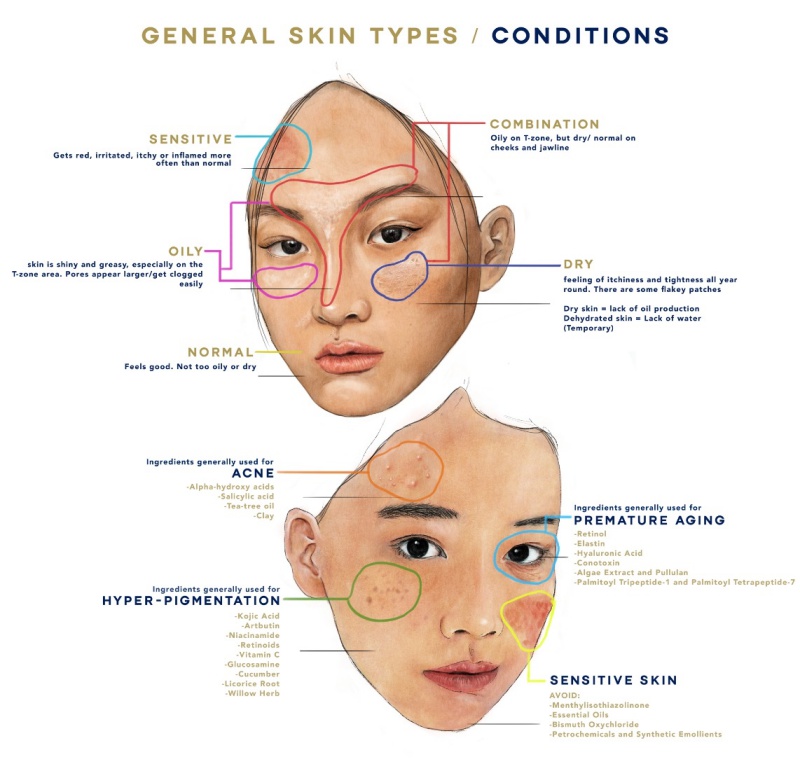We know how a bad skin day feels – it can totally ruin everything. Take charge of your life by first understanding what your skin needs. But before you do that, you need to know what skin type you have – which is basically how your skin looks and feels. Your skin type is also determined by the levels of oil and water in your skin and by how dry or moisturized it is. But this can change gradually throughout your lifetime.
Your skin condition however differs from skin type because factors like lifestyle habits and the environment can affect the condition of your skin, causing it to be prone to issues like acne, dullness, dehydration, hyperpigmentation or fine lines and wrinkles. This means that you may have a combination of skin conditions at any one time – you may have normal skin that’s dehydrated and acne prone. If you’re a noob when it comes to understanding your own skin type, here’s a simple guide to help you get started.
The four most common skin types

Normal skin (lucky you) is mostly smooth and clear, with small or nearly invisible pores and a healthy balance of sebum production and moisture. The skin sheds its cells normally, appears even-toned, radiant and has very few imperfections.
Combination skin is one of the most common skin types with a mixture of dry and oily skin. The cheeks and area near the eyes tend to be drier while the T-zone (the forehead, nose and chin) are oilier. Combination complexions usually feature shiny skin and enlarged pores and may be prone to blackheads and blemishes.
Oily skin is characterized by a shiny surface, caused by the overproduction of sebum secretion. Skin is also slightly thicker with an appearance of larger pores and are prone to breakouts and blackheads.
Dry skin lacks moisture and is often dull and uneven. Skin also tends to feel tauter due to a lack in elasticity, thereby leaving it more prone to fine lines and wrinkles. Other common features of dry skin include red patches, roughness and flaking.
How to determine your skin type
For a quick self-exam, look at yourself closely in the mirror. Are the pores along your T-zone (namely the bridge and sides of nose and chin) visible? If they are, you have what’s commonly called enlarged pores. Pores become enlarged when oily gunk get trapped within. Do you also see white or black dots in them (aka whiteheads and blackheads)? White and blackheads are a form of acne and are also known as comedones which occur when the pores in the skin become plugged with dead skin cells and sebum.
Next, with clean hands, gently run your fingers along the surface of your skin to feel the skin texture. Does it feel smooth and supple or rough and uneven? If you have the latter, it could be indicative of two types of skin condition: dry and sensitive or combination with a case of enlarged pores.
This is just a simple self-check exercise. Before buying a product, ensure that you have the right products for your skin type / condition. For a more thorough and accurate diagnosis, you are highly encouraged to consult a skincare or medical professional.
Book your appointment for consultation at IDS Clinic here!
**first published on 26 February 2019

 Konsultasi Kulit
Konsultasi Kulit










